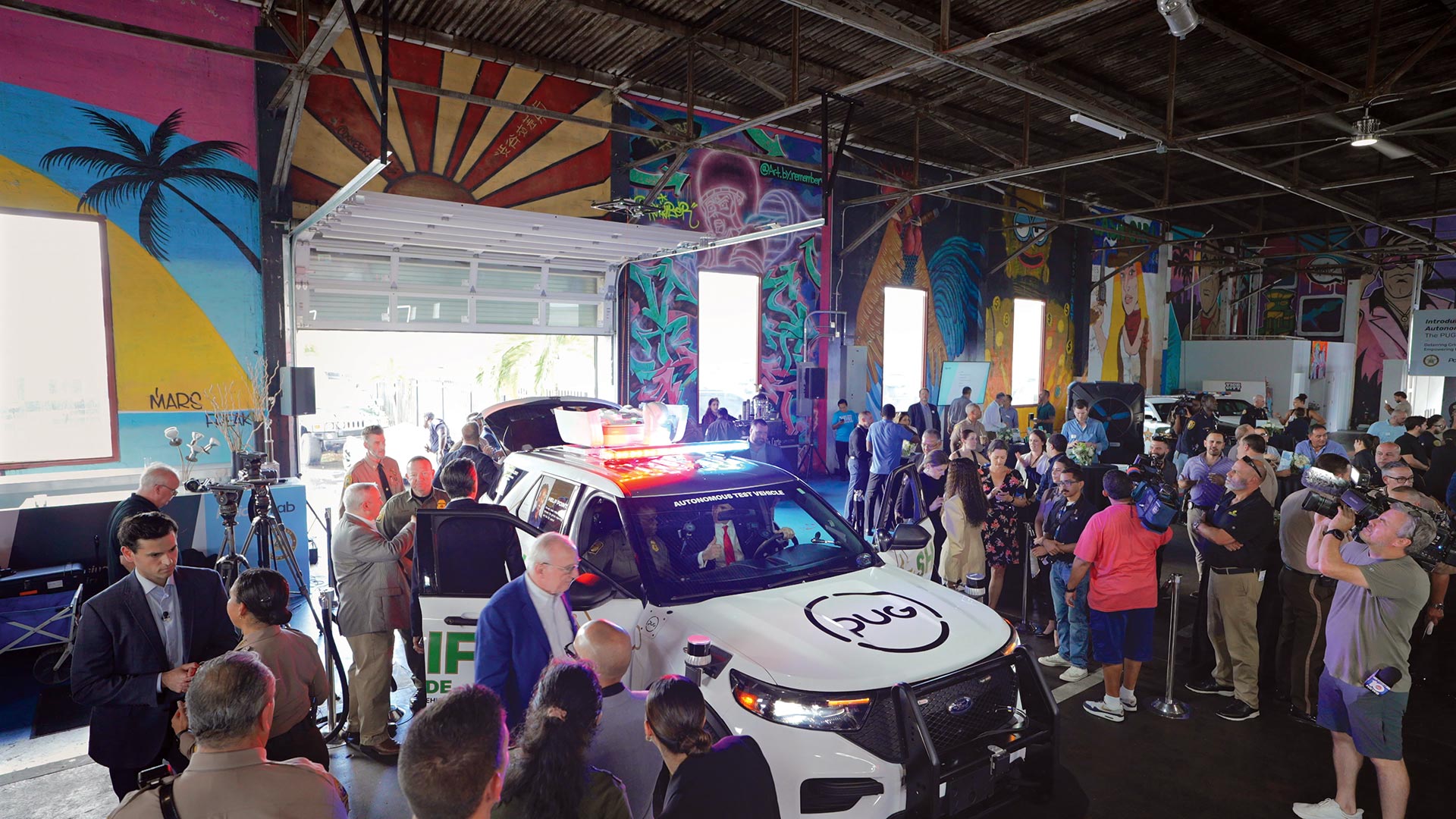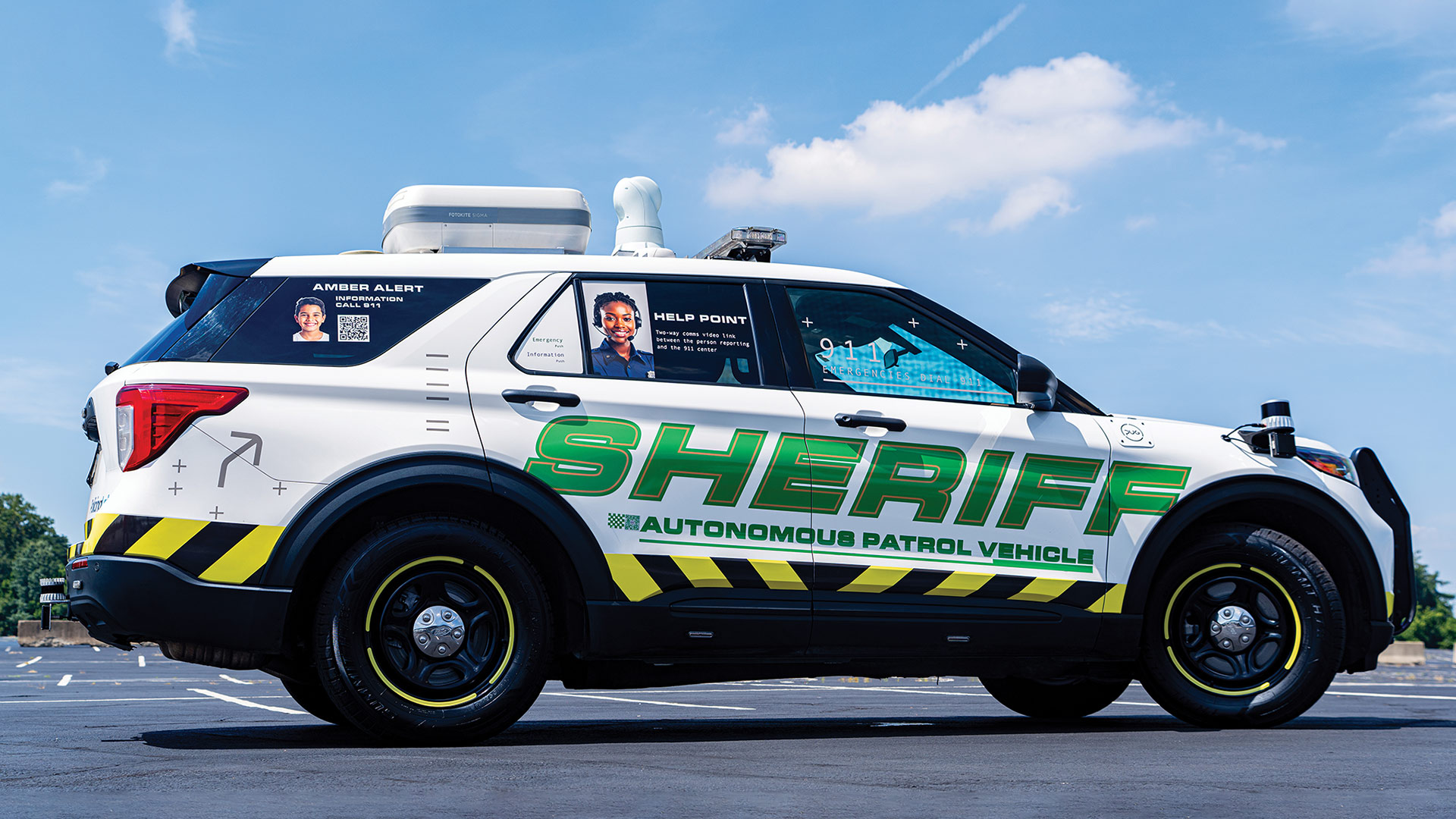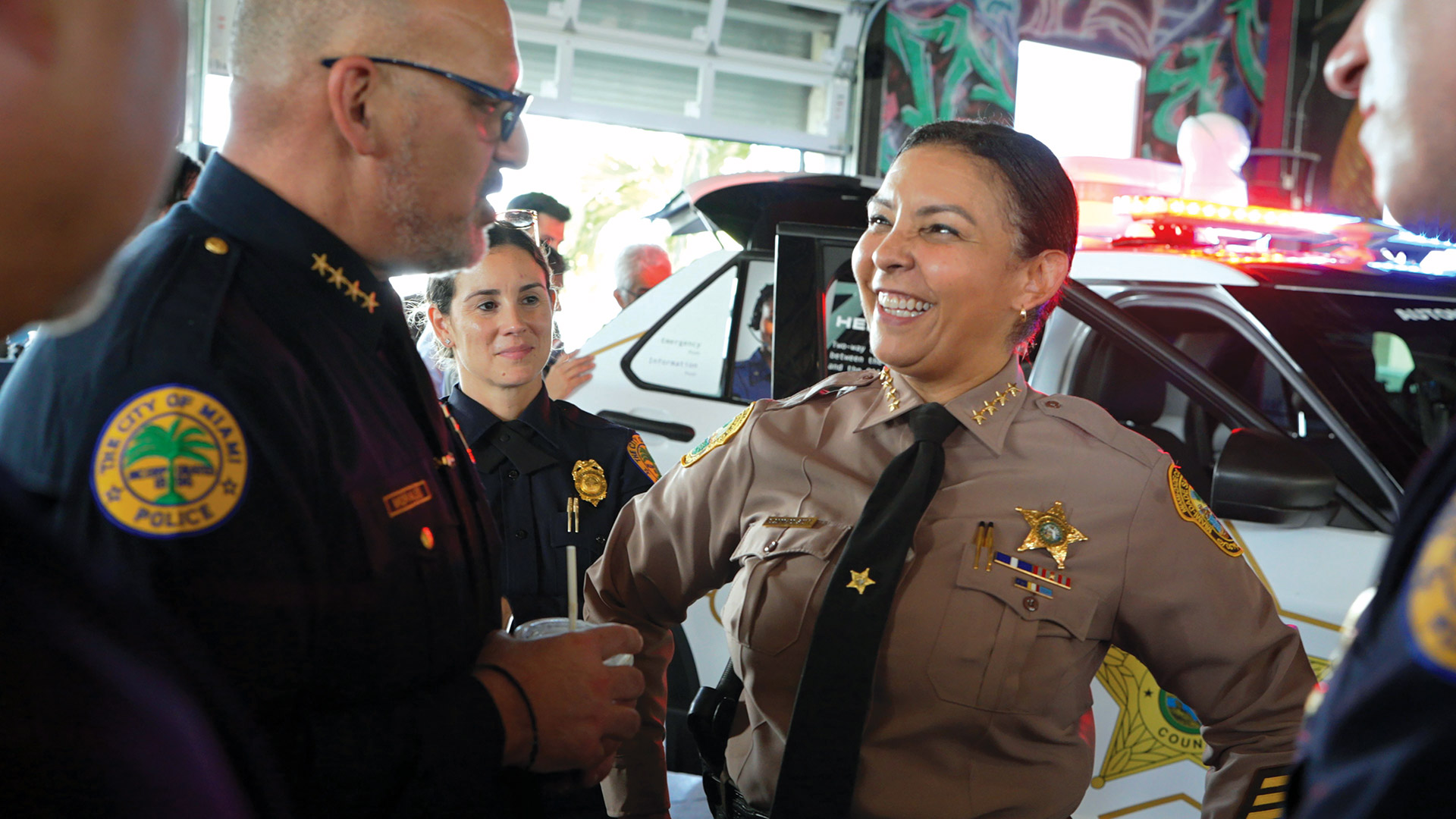
Any child of the 1980s was familiar with the telltale theme music accompanying video footage of a highly modified Pontiac Trans Am with a red “scanner” light flashing across its front end. Knight Rider catapulted David Hasselhoff to fame as he fought crime alongside his automated mechanical partner. Despite the incredible cool factor of a self-driving car, that kind of technology was once the stuff of science fiction — until now.
While many automakers, such as Tesla, have pushed the envelope on self-driving technology for the last several years, the capability has typically been considered an assistive feature requiring human oversight. According to Miami-Dade Sheriff Rosie Cordero-Stutz, however, her office is now confident enough to get behind the wheel — or, more accurately, step away from it — of a fully-automated patrol vehicle, the first of its kind in the country.

Much like the Hoff’s iconic car, Miami-Dade’s ride, which was unveiled October 1, comes with a cool nickname: “PUG,” short for police unmanned ground. At first glance, PUG appears to be a standard Ford Interceptor SUV, but unlike the agency’s other green-and-whites, this one doesn’t necessarily need a human driver. It’s equipped with 360-degree cameras, license plate recognition, thermal imaging, audio sensors and even a deployable drone, making it one of the most advanced patrol units in the nation.
Of course, innovation comes at a price. The Miami Herald reports that producing additional PUGs would cost between $150,000 and $200,000 per vehicle. Fortunately, the Miami-Dade Sheriff’s Office acquired its prototype at no cost to taxpayers, thanks to a donation from the nonprofit organization Policing Lab, which developed the vehicle.
Uniformed patrol officers need not worry about being replaced just yet. According to Policing Lab, PUG’s uses will be limited to appearances at community events before it is considered for broader patrol use. The sheriff’s office plans to deploy the vehicle on predetermined routes, using it to deter criminal activity in high-crime areas and to provide “backup” and support at traffic crashes or crime scenes with its drone and other advanced features, though it won’t be able to operate on highways due to its speed being restricted.
“Miami-Dade continues to lead in public safety innovation,” Cordero-Stutz said. “The PUG allows us to explore how new technology can keep people safe while making the best use of our resources. Deputies remain at the heart of this mission, and the PUG is here to support them.”
Although the sheriff’s office intends to operate the vehicle in a fully autonomous capacity, a deputy will likely remain behind the wheel for the first year as the agency gathers public feedback. The sheriff hasn’t said how that lucky deputy will be chosen, but it’s safe to say the line to drive that patrol car will be a long one.

As seen in the November 2025 issue of American Police Beat magazine.
Don’t miss out on another issue today! Click below:





